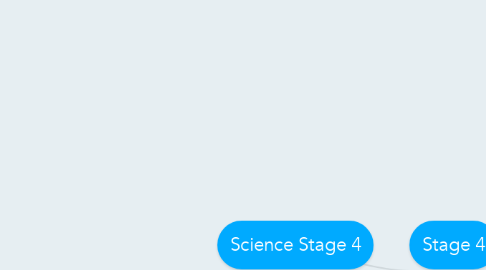
1. Stage 4
1.1. Earth And Space
1.1.1. Outcomes
1.1.1.1. describes the dynamic nature of models, theories and laws in developing scientific understanding of the Earth and solar system
1.1.1.2. explains how advances in scientific understanding of processes that occur within and on the Earth, influence the choices people make about resource use and management
1.1.2. Content
1.1.2.1. ES1. Sedimentary, igneous and metamorphic rocks contain minerals and are formed by processes that occur within Earth over a variety of timescales.
1.1.2.1.1. a. describe the structure of the Earth in terms of core, mantle, crust and lithosphere
1.1.2.1.2. b. relate the formation of a range of landforms to physical and chemical weathering, erosion and deposition
1.1.2.1.3. c. outline the origins of and relationships between sedimentary, igneous and metamorphic rocks
1.1.2.1.4. d. identify that sedimentary, igneous and metamorphic rocks contain minerals
1.1.2.1.5. e. classify a variety of common rocks and minerals into groups according to their observable properties
1.1.2.1.6. f. describe the conditions under which fossils form
1.1.2.1.7. g. outline how geological history can be interpreted in a sequence of horizontal sedimentary layers, in which the oldest are at the base and the youngest at the top
1.1.2.1.8. h. describe examples to show how people use understanding and skills from across the disciplines of science in occupations related to the exploration, mining or processing of minerals in Australia
1.1.2.2. ES2 Scientific knowledge changes as new evidence becomes available. Some technological developments and scientific discoveries have significantly changed people's understanding of the solar system.
1.1.2.2.1. a. explain that predictable phenomena on the Earth, including day and night, seasons and eclipses are caused by the relative positions of the sun, the Earth and the moon
1.1.2.2.2. b. demonstrate, using examples, how ideas by people from different cultures have contributed to the current understanding of the solar system
1.1.2.2.3. c. compare historical and current models of the solar system to show how models are modified or rejected as a result of new scientific evidence
1.1.2.2.4. d. describe some examples of how technological advances have led to discoveries and increased scientific understanding of the solar system
1.1.2.3. ES3 Scientific knowledge influences the choices people make in regard to the use and management of the Earth's resources.
1.1.2.3.1. a. classify a range of the Earth's resources as renewable or non-renewable
1.1.2.3.2. b. outline features of some non-renewable resources, including metal ores and fossil fuels
1.1.2.3.3. c. describe uses of a variety of natural and made resources extracted from the biosphere, atmosphere, lithosphere and hydrosphere
1.1.2.3.4. d. investigate some strategies used by people to conserve and manage non-renewable resources, eg recycling and the alternative use of natural and made resources
1.1.2.3.5. e. discuss different viewpoints people may use to weight criteria in making decisions about theuse of a major non-renewable resource found in Australia
1.1.2.3.6. f. outline the choices that need to be made when considering whether to use scientific andtechnological advances to obtain a resource from Earth's spheres
1.1.2.4. ES3 Scientific knowledge influences the choices people make in regard to the use and management of the Earth's resources.
1.1.2.4.1. a. classify a range of the Earth's resources as renewable or non-renewable
1.1.2.4.2. b. outline features of some non-renewable resources, including metal ores and fossil fuels
1.1.2.4.3. c. describe uses of a variety of natural and made resources extracted from the biosphere,atmosphere, lithosphere and hydrosphere
1.1.2.4.4. d. investigate some strategies used by people to conserve and manage non-renewableresources, eg recycling and the alternative use of natural and made resources
1.1.2.4.5. e. discuss different viewpoints people may use to weight criteria in making decisions about the use of a major non-renewable resource found in Australia
1.1.2.4.6. f. outline the choices that need to be made when considering whether to use scientific and technological advances to obtain a resource from Earth's spheres
